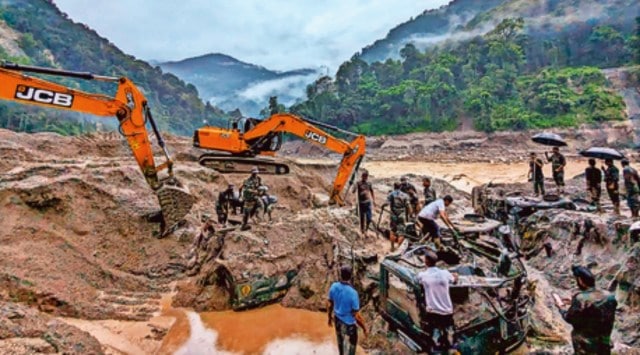A probe is on to ascertain if the dam’s spillways — openings to allow excess water to flow out — were opened before the flood waters from the South Lhonak glacial lake reached Chungthang roughly 55 km downstream. But even opening the doors may not have been enough.

For, with a spillway capacity of 7,000 cumec (cubic metres per second), the Teesta-III dam was not built to survive a GLOF that can discharge as high as 15,000 cumec.
As many as 102 people, including 22 Army personnel, continue to remain missing since the early hours of Wednesday.
There were a string of early warnings before Teesta-III was commissioned in 2017. It was developed at a cost of Rs 13,965 crore and is run by Sikkim Urja Limited (formerly Teesta Urja Limited). The government of Sikkim holds a 60% stake through its investment company Sikkim Power Investment Corporation Limited in the company.
Way back in 2005, the Environment Ministry’s steering committee for Carrying Capacity Study of Teesta Basin noted that “glacial moraines (sediment carried and deposited by a glacier), temporarily forming glacial lakes and debris cones, are a potential source of hazard in North Sikkim.”
The draft Carrying Capacity report, based on which Teesta-III was cleared in August 2006, also warned that the region was “quite susceptible to disastrous hazards due to Glacial Lake Outburst Floods (GLOFs).”
Story continues below this ad
South Lhonak glacial lake, in particular, was under watch for decades as it steadily expanded in size. But Teesta-III underestimated the risk posed by a once-in-a-century flood event.
At public hearings and, later, in submissions to the erstwhile National Environmental Appellate Authority (NEAA) where the project was challenged, the project developers claimed that “sufficient mitigation measures have been proposed… to take care of any eventual flood… the spillway has been designed to handle Probable Maximum flood of 7000 cumec, which is already taken on a highly conservative side.”
“They never addressed the issue of a possible glacial lake burst even though it was a ticking time bomb barely 50 km upstream. Provisioning for 7000 cumec is barely sufficient for rain-induced floods. A GLOF demands spillways of much higher capacity,” said a senior Central Water Commission official familiar with the projects in the Teesta basin.
Worse, the project tried to further reduce the spillway capacity from 7000 to 3000 cumec by altering the approved design parameters which was red-flagged by the Central Electricity Authority (CEA) in 2008. “Flood discharge higher than 3000 cumec is likely to overtop the dam endangering its safety/washing away of dam,” it warned.
Story continues below this ad
The Environment Ministry’s Expert Appraisal Committee (EAC) for River Valley and Hydroelectric Projects inspected the project site in April 2009 to observe “that a rockfill dam with inadequate spillway capacity faces the risk of overtopping, which leads to Dam Break: a catastrophic proposition.”
Teesta-III reverted to the approved spillway capacity of 7000 cumec, which, as it turned out, was grossly insufficient to allow passage to the GLOF this week.
When contacted, Sunil Saraogi, the executive chairman of Sikkim Urja Limited, said: “I cannot comment on what transpired in the past but there was no lapse at the operational level. It is too early for a review but we will certainly take every precaution possible based on science.”
“Climate Change has once again knocked loudly on our doors. We must learn from this disaster and put a more credible dam safety governance in place. We must fix accountability for the lapses and create a credible, functioning early warning system,” said Himanshu Thakkar, coordinator of the South Asia Network on Dams, Rivers and People.









